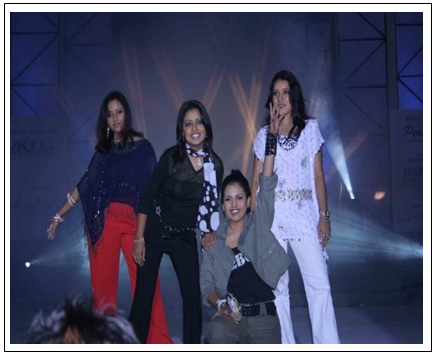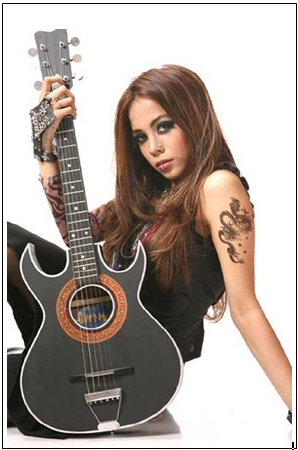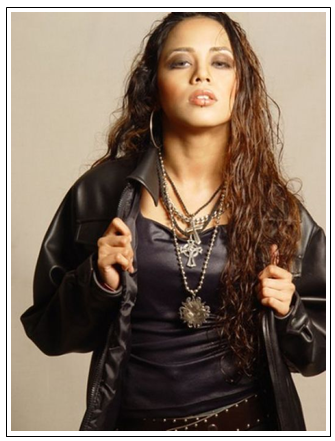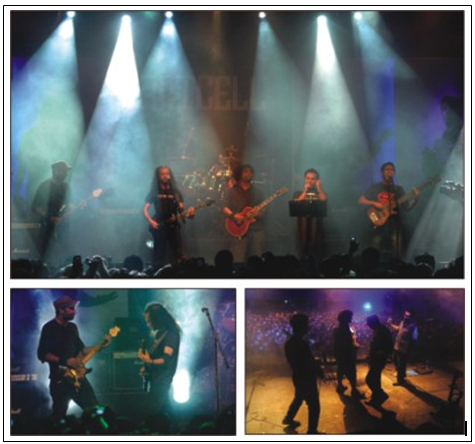Chapter I
Introduction
The world as we know it has embarked on a long journey of constant change over the years and like the industrial revolution, internet era has changed the world during the 90’s. Globalization instantly transformed from a mere theory to a daily phenomenon. Bangladesh as a developing country soon started making great strides and is taking great leaps forward at the turn of the 21st century. We came a long way since our independence but as we are trying to measure our success. Our current struggle is not because of just one or two distinguishable points which can be directly identified in black and white, but one fundamental point in this journey is the loss of cultural roots which make us as a nation.
As a country, Bangladesh was once vibrant with cultural activities. This was mainly because of countless festivals that were celebrated throughout the country. Different regions and periods of different rule contributed to this vibrant collection of different genres of music, songs, poetry, dance, rituals and so on. These aspects of our culture did not just make our nation different but they were the symbol of the nation. As the country got on with the business of moving forward as a nation after its independence, it started changing due to outside influences. Changes are not necessarily bad and as a developing country it is fundamental, but as time went by these changes started getting more drastic by the day. Present world has embraces globalization. It is a good and necessary phenomenon and is essential for the growth of the nation in the international arena. The values of the nation and its people rest on our culture and that is what makes us different. The youth of the nation are the driving force of the country and the future of the nation rests on them. But with everything which is new and developing the youth also tend to change and take on a lot from its surroundings and currently they are adopting on a lot of this imitated culture into their system. However, pop culture is responsible for deluding our youth. This is not just bad for the heritage of our treasured culture but can also be very lethal to the progress of our nation.
Context/ Problem Statement
As the country is changing and becoming more modernized the taste and choice of people’s music is also changing. The great heritage of our folk music is being lost every day. The current modern music industry is flourishing in the urban area. This growth in popularity also brought financial benefits to the industry and yet the very powerful folk music with its entire heritage is still dying. Some very talented and well known artists are now left ignored in the country side and are suffering from ignorance from the mainstream musicians. Many different genres of folk music have already been lost for the lack of attention. More and more people are now being exposed to the western media and that is having its own impact but at the same time, the music industry is also deeply changing. It’s not just changing but now has come to a point where it is totally losing its identity. In this new agenda, songs are becoming a hazardous victim as well as the medium of contamination. Singers like Habib and Ornob are composing good songs and had introduced the Bangladeshi music industry to electronic vibes bringing in a new revolution that turned the tales of songs and composition (Waheed, 2009). For example, they began the profound use of trance & techno along with the electronic voice dubbing to make songs more soothing & energetic completely refreshing the scenario of popular music(ibid). Following the social stir of this harbinger, other people began composing with more and more liberty. The spreading of the dogma of western superiority, or rather American supremacy, in the last few years, among the Bangladeshi controlling class opened up a greater consumer market. The impact fell on all sectors and disciplines,including songs. Tishma, Deshi Mc’s, Stoic Bliss, Kaniz Shuborna, Subconscious, Fuad, Stoic Bliss, Mila, Haider Hussyn and several other singers plunged into the reformation of songs. Consequently, western infiltration became unstoppable. Hence, in the long run, the popular music, which has access to more minds, will contaminate most of those minds with western culture. Eventually, the generation next will be intellectually sold out to the west; lost in the maze of promises of greatness; and uprooted.
Most of the musicians are now imitating foreign artists, not just in music but also in outfit. But as role models of the nation, they have a responsibility towards the nation, people look up to them and try to follow their conversation manner, way of life style, dress up sense, language mode, gesture, posture and so on. Many of today’s urban youth are using very crude language with minimum respect to its past and glory. A lot of people are using abusive language as a regular part of their conversation; they are also losing respect for people around them and also have been an incline in portraying women with vulgarity and disrespect. As I have mentioned before, changes are good and we have to be open towards changes to be able to move forward but there are certain limitations that must not be crossed. The music industry must not neglect the original culture lying all over the nation. There should be steps taken by the appropriate ministry from the government to look after this dying tradition of Bangladesh. Also there must be someone to monitor the language used in modern mainstream music industry and the massage that is being sent through songs which is affecting its audience.
The importance of culture is immense for the development process of the nation as it reflects the heritage and characteristics of a nation. It allows us to identify ourselves differently. Also the musicians are role models of the society and as a role model they should be responsible for the message that they are portraying to their audience. This will not revolutionize us as a nation but will go a long way in building our future as “Bangladeshi”.
Purpose
There has been a drastic change in the culture, language, posture and way of life among the youth of the country. This change has been a very rapid and vast change and has been more intensely felt in the urban part of the nation. At the same time, the music industry has gone through a similar change and the fact that this new evolution of the Bangla music is mostly targeted towards the urban youth of Bangladesh. Purpose of this paper is to find out whether these parallel changes have been mere co-incidence or has it been influenced by the changes in the music arena. Thus, this paper will create awareness among youths and authorities of music industry. Lyrics and photos of singers will be analyzed to extricate the non-cultural elements from them and attempts to show these elements are adding another dimension to the gradual fading of Bengali cultural values, especially among the next aspiring generation.
Objective
The main objective of this paper is to create a greater awareness of the modern music phenomenon and help the people or youth of Bangladesh better understand the consequence of the new changes in modern music so that they can be aware of what is actually going on in the music industry. This objective is related to culture, language, posture and way of life among the youth of the country and how these changes are severely affecting national culture.
Central Research Questions
This study addresses the following specific research questions:
1 What elements in the contemporary popular songs of Bangladesh are affected by western reproduction?
2. To what extent reflections of the west are contrastive to our cultural values?
3. How do they contradict the national tradition?
4. How is the fusion a threat to not only the music world but also society in general?
5. Are these new style songs really “Songs” or just an excuse to dump cheap foreign imitation on the youth to make a “quick-easy” buck?
Significance of the Study
The implicit importance of this research is the young people who are to take charge of the country’s future in due time. The explicit importance is all the people of the country who will be ultimately losing themselves to a country intellectually and economically governed under western culture.
Delimitation:
As this is a small scale research, total 16 songs from female singers like Mila, Kaniz Shuborna and Tishma, from male singers like Fuad and Haider Hussyn, from bands like Stoic Bliss, Subconscious and Deshi Mc’s are selected to exemplify different kinds of elements, genres and features. The features to be noted are the common ones only. There will be fusion, micro narratives, duplication, simulacra, inter text, and eroticism in those songs which definitely will show the post modernity of the west.
Limitation
I could not locate any other research done on this topic neither on internet nor in the library. I have worked a deal from my own understanding of postmodern theory, cultural studies and CDA perspective. Each song offered a vast range of examples under some categories, but I only included a few striking words or phrases and segments. Visual effect could not be provided in this paper. The methods of postmodern was difficult to inter relate.
Operational Definition of Terms
Fusion: In Cambridge Advanced Learner’s Dictionary (2008:233), it means blending of different things into one so here in this study I see touch of English in Bangla songs.
Intertextuality: It means text within text by Cambridge Advanced Learner’s Dictionary (2008: 489).
Micro-narrative: Cambridge Advanced Learner’s Dictionary (2008: 511) suggests that lines which are more fragmented or small is called micro-narrative. Now-a-days, we do not find long meaningful lines in Bangla songs rather it is becoming more shorter.
Simulacra: According to Lyotard (1996), it is copy of real things or re-copy. Here lyrics of songs will show how it is copied from original one. Some examples are reduplication of western genre.
Double Coding: This term uses to compel reasons for these opposite pairings (Jencks 1996). The concept of double coding is frequently seen in the songs creates today in Bangladesh. It incorporates newness into old songs, adding lyrics or musical karaoke, transforming it to fit the desire of the popular culture.
Revolution: According to Cambridge Advanced Learner’s Dictionary (2008), it means a very important change in the way that people do things. Bangla pop music is having drastic change in this post modern era.
Rock Music: This is a type of popular music with a strong loud beat which is usually played with electric guitars and drums by Cambridge Advanced Learner’s Dictionary (2008). This genre of music is influencing Bangla music industry.
Pop Music: Cambridge Advanced Learner’s Dictionary (2008) recommended that it means modern popular music, usually with a strong beat, created with electrical or electronic equipment, and easy to listen. Pop music is very famous among Bangladeshi youth.
Westernization: According to Cambridge Advanced Learner’s Dictionary (2008), westernization is assimilation of Western culture; the social process of becoming familiar with or converting to the customs and practices of Western civilization.
This act is the spreading of the dogma of western superiority, or rather American supremacy, in the last few years, among the Bangladeshi controlling class opened up a greater consumer market.
Chapter II
2.1The Beginning of the Ever-Changing Music World
During the beginning of 2003, came undoubtedly the most promising time in Bangladeshi modern band music industry. There was a new sense of electricity in the air as underground shows started gathering huge crowds with an ever increasing regularity. There were concerts every weekend and a gathering at the shows had become a form or norm for many. The underground music scene was buzzing with activity, creativity and new experiments. With this new surge of activity came some of the most timeless musical albums since the golden period of the 80’s and 90’s with new artists like Artcell, Black, Bangla, Nemesis, The Watson Brothers and new revolutionary albums from old timers like Warfaze and Dolchut. In short it did not matter if your choice of music genre was Rock, Heavy Metal, Alternative or Rock & Roll there was a great availability of bands for everyone. Although this might seem like a coincident but it was not an overnight revolution rather far from it (Tanim, 2010).
During the early 60’s the world was in a vertigo by bands like the Beatles, The Rolling Stones, The Eagles and many more who transfixed the global music industry and like many countries the band music in Bangladesh started from there with new bands like “The Underground Peace Lover” and “The Lightning” started covering international hit in many clubs, hotels and other music venues. This was followed by Azam Khan widely known as the father of pop and band music in Bangladesh who started making songs in Bangla but with international tunes (Tanim, 2010). This was a massive success among the youth of the newly independent country and he gripped the nation with his new form of music. This success paved the way for new bands such as Renaissance, Winning, Souls, Feedback, Feelings, Miles and many more later on. It was by far the most active time in the history of Bangla band music with artists like Ayub Bacchu, James, Partho Borua, Maksud, Shafin Ahmed and several others made their mark and left a long lasting impression on music entrusts of the nation. So much was the success of these bands and musicians that some of the songs made during that era have become timeless and still is very much on the lips of many people all over Bangladesh. “Miles” who was a part of the movement in the late 70’s has gathered enormous success in the international scene. They have not only managed to keep the band going but also have remained largely unchanged over the decades and have regularly gathered big praises in Bengali speaking community outside of Bangladesh. Ayub Bacchu, a member of the original Feelings line up later put together “LRB” who are easily the most popular band in the country. James, another member of “Feelings” created “Nogor Baul” in the early 90’s and made some of the most unique music of the period. “Nogor Baul” worked on pure Rock, Rock and Roll and also Rega music and became hugely popular all over the country, but James’ most notable success came over the last 4-5 years when he ventured into Bollywood and created some of the most popular Hindi songs of the decade. This is not only propelled his popularity in Bangladesh and India but also reinstated his musical abilities. The 80’s and the 90’s were not as active in terms of new and successful Bangla bands but there was no shortage of good music as bands such as “Souls” “Feelings” and “Warfaze” went through reformation. They continued producing big hits with songs like “Shei Tumi”, “Tarai Tarai”, “Keno ei Nisshongota”, “Nissho Korecho” and many more which are all products of this golden era. During the late 90’s there were many new bands popping up in the Underground music arena who largely covered English number but as the decade drew to an end more established musicians such as Shumon from “Aurthohin” Komol and Tipu from “Warfaze” started getting involved into the underground music scene who played a vital role as mentors and also at the same time the emergence of talent shows such as B&H Music Hunt allowed the Underground bands to learn more and soon they started producing the goods. As the turn of the decade rolled on so did the music industry of Bangla Band music scene and then came the hit of 2003 and 2004. Although music of the 80’s and 90’s were immensely popular, it was fading as the new generation was looking for something different and these new bands really came as a breath of fresh air and created huge buzz. The youth managed to reflect themselves in this new music movement and after which came a revolution in the Bangla music scene (ibid). Like every change comes two paths and the same happened to the Bangla music industry although the Band music was doing very well there was another new arrival in the scene and it was rap and Hip Hop. As the 60’s and the 70’s gripped the world with Rock music the new millennium is gripped by Hip Hop and rap songs and like it did in the 70’s this new revolution in the international music era also started spreading in the Bengali music industry. With artists like Mila, Tishma, Deshi MC’s, ACID and so on brought hip hop and rap music to which largely contained vulgar and abusive language, glorifying brutality, criminal and violent acts with their music (Waheed, 2009). Very quickly the highly growing Bangla music industry started growing two very different branches and went completely opposite to each other. This era had come up to make a quick buck made things even worse as some musicians clearly did not care much about the impact of their music so long it made money and that’s where this research begins. This paper will explore whether the new surge of a twisted branch of the glorious Bangla music industry is really having a negative impact on the youth and the culture of the country or is it just another expression of the youth (ibid).
Introduction to Cultural Study
i. Imposition of Contemporary Western Culture
Tomlinson (2001) suggests, the cultural imperialism seen as the ‘imposition’ of contemporary western culture and the media are generally located at the centre of the culture of the capitalist-west. This paper will further explore the main idea of the capitalist-west with the data of lyrics and pictures.
ii. Cultural Imperialism
Critique Fejes (2001) also turned his view to media imperialism as cultural imperialism where culture of eastern society is influenced where multicultural conflict starts.
Bifurcates (2001) connects the Neo-Marxist Approach which sees cultural imperialism somehow in the service of capitalism, as a set of practices enabling the spread of capitalism as an economic system. According to him, capitalism produces a consumer culture within which all cultural action and experience becomes ‘commodified’. He also sees ‘consumerism’ as consequence of capitalist expansion to the ‘developing’ socities of the third world. Basically, Capitalist consumerism is displayed as a lure to the powerful in developing countries to get them on to the hook of the capitalist world system. The consumer development occurs for the popular music form not solely from the existing ideologies but also because it is being build up. The loud and instrumental music composed in modern times, especially in the present world, is catchy and influential to the listening minds. The impact increases because the duration of the music is very long in the songs. Captivated by the music, an unconscious reception of the lyrics is stored in our minds. Even if merely for the tune, people repeat segments of the songs.
iii. Culture Industry
According to Redmond and Holmes (2001), The culture industry perpetually cheats its consumers of what it perpetually promises and the promissory note which, with its plots and staging, it draws on pleasure is endlessly prolonged; the promise, which is actually all the spectacle consists of, is illusory. Media exploits the common audiences through such misguidance. They make illusions. Thus, they manipulate target audience.
Introduction to Postmodernism
Post modernism developed in France in the 1960s (Powel, 1998). According to Hassan (2003), postmodernism may be a response, direct or oblique, to the Unimaginable that modernism glimpsed only in its most propheric moments. Certainly it is not the dehumanization of the arts that concerns us now; it is rather the Denaturalization of the Planet and the End of Man. Post modern intellectuals, philosophers and theorists have attempted to map the contours of our rapidly changing postmodern world. It is a mix of identities, realities, cultures, races, gender roles, technologies, mediascapes. Post modern artists, just like explores of past centuries, simply plunge into the unknown and then try to represent it (ibid).
Post-Modern Theory
Jencks, was an architecture writer who used “post-modern” in architecture to mean a departure from modernism. He (2003) uses the term “double coding” compelling reasons for these opposite pairings. He truly believes that post modernism has the essential double meaning: the continuation of Modernism and its own transcendence. The concept of double coding is frequently seen in the songs creates today in Bangladesh. It incorporates newness into old songs, adding lyrics or musical karaoke, transforming it to fit the desire of the popular culture.
Baudrillard, a controversial sociologist has produced a unique reflection on contemporary culture, indebted to Marx, to structuralism, and to Marshall McLuhan’s work on electronic media. He (2003) says, postmodern societies are dominated by computers and televisions, have moved into new reality, which he outlines in “The orders of simulacra” which means copies of real. He believes that postmodern era is a death of real. For Baudrillard, Postmodern culture is dominated by the simulacrum. He also talks about “Intertextuality” or often called multiple surfaces, which is an illuminating concept to bring a reading to a series, since the work utilizes a number of culturally significant codes and conventions and also refers as a text to the environment within which it is displayed. Any intertextual chain demonstrates the hybridity (mixture). When we listen to songs now, we can usually trace it back to some old songs sung or old music created. The research later will further explore this through the findings.
A professor of comparative literature Jameson commented widely on contemporary literature, art and culture. In his essay, Jameson (2003) presents a Marxist critique of postmodernism as an expression of the current state of capitalist society, “late capitalism”. Jameson suggests that the property of postmodern culture is the fascination of culture by multinational capital. He sees post modern era as an intensification and latest phase of a capitalist world system. Mandel’s (in Jameson, 2003) history inspired him to see present culture as a reflection of the dislocation and fragmentation of language communities which is splintered into small groups and each speaking a private language of its own and it is developing private code or dialect. Jameson basically believes in individuality. These theoretical concepts would occupy the grounds for evaluating the findings, later in this paper.
Lyotard (2003) analyzes the production of knowledge by science, as well as the discourse of everyday social life in terms of discontinuity, plurality and paralogy. He celebrates the multiple, incomplete, heterogeneous, fragmented, contradictory and ambivalent nature of postmodern society. The grand narrative or meta narrative has lost its credibility (ibid). He is saying in postmodern societies many micro-narratives are jammed together, and this carnival of narratives replaces the monolithic presence of one meta-narrative. The decline of such narrative can be seen as an effect of the blossoming of techniques and technologies (ibid). The lyrics and the driving influence behind it will be judged from the view that they are shifting from macro to micro.
Advocate of postmodernism Hassan (2003) says postmodernism suffers from a certain “Semantic Instability” mean no clear consensus about its meaning thus it leads to double view of everything. Postmodern society is mainly urban based and it celebrates urban union (ibid).He also mentioned about “Technologism” which is another post modern theory, is more digitalized in mass scale. It is an era of technology. “Dehumanization” theory by him is mentioning loss of our moral ethics. It is an end of old realism and invention of Neo-Realism. Like Lyotard, Hassan (2003) also stated about the fusion or intertext of original things. When the lyrics are evaluated or the videos or still shots are scrutinized, it reflects the extreme use of technology and the loss of ethical values.
Introduction to CDA
The basic belief of CDA can help us to take right decision. It suggests us not to judge everything at face value. We should inquire about things before believing anything. If we inquire by asking question to ourselves then we will be able to understand the mechanics of the society and how things function thus ordinary people will not be manipulated or misinformed.
The starting point of Critical Discourse Analysis (CDA) is social issues and problems. It analyses texts and indeed any type of semiotic material (written texts, conversations, television programs; it begins with the issues which preoccupy sociologists, or political scientists, or educationists (Fairclough, 2001). According to Haque (2009), critical discourse analysis is perceived from a broader perspective; besides spoken interactions and written texts, it could also denote semiosis, advertisements, or any form of communication that is systematically able to perform the basic communicative functions.
Scope of CDA
The closing universe, especially through language is gaining on to the Bangladeshi people. Songs are usually considered as modes of entertainment, so their impact on the receiving minds is often ignored. CDA has a large scope of making people aware of this impact, which has a great store of hidden ideological power.
Consumerism
According to Fairclough (2001), “Consumerism is a property of modern capitalism which involves a shift in ideological focus from economic production to economic consumption, and an unprecedented level of impingement by the economy in people’s lives”. The three steps that Fairclough mentions, “building relation”, “building images” and “building the consumers” will enable the researcher to answer the last central question, showing that the increase in the attempt to create consumer are not only for the songs but also the companies that provide funds for it.
Chapter III
Research Design
This is a qualitative research to find out the effect of the contemporary popular music of Bangladesh on the country’s culture. It evaluates the cultural changes that occurred in Bangla pop songs with specific focus on lyrics of seven different singers and composers- Mila, Tishma, Kaniz Shuborna, Fuad, Haider Hussain, Stoic Bliss, Deshi Mc’s, Subconscious, – and pictures of Tishma, Mila, Deshi Mc’s, Stoic Bliss and Fuad. From each artist two to three songs has been analyzed. Selected songs offered a vast range of vulgar language, erotic relationship, informal language, western genre (Rap /Hiphop/Pop, electronic pop), fusion (remix), attire and presentation. At the same time, the post modernism issues of fragmentation in narrative (Lyotard, 1996) and development of private dialect (Jameson, 1996) has been studied.
Theoretical Framework
To evaluate the effect, one first needs to understand the difference between the two cultures and how the Bangladeshi culture is adapting the western culture. This research looks into that aspect through theoretical essays of the western culture, development history of Bangladesh and certain personal observations of the recent norms and situation of the society. Therefore, this research adopted Hassan’s (2003) hybridity, Lyotard’s( 2003) crisis in narratives, Jameson’s (2003) development of private code or dialect, Baudrillard’s (2003) and Jencks’s (2003) Double coding. All these in contrast to the findings regarding the Bangladeshi culture will enable the researcher to pinpoint the changes that have occurred in the world of music in Bangladesh. The lyrics reflect hybridity of different eras, in other words, double coding, shifting from macro formation to micro forms. Moreover, frequent code-mixing and code switching between two languages, Bangla and English, or standard Bangla and dialects,develops in them a mixture of multiple codes. Besides, photos from magazines like, ICE today, Anondolok and The Daily Star (Entertainment section) will be used to show that these trendsetters are effecting the youth generation of Bangladesh by inspiring them to follow the western set up and language so as to raise the consumer for the capitalists. All thus general findings will enable the researcher to study the lyrics of the selected songs and videos to point out the concerned aspects present in them and show the differences. Eventually the research will focus on the question that who are the benefit group of such changes in songs: the producers or the listeners. This will be approached from the critical discourse analysis perspective, namely its consumerism phenomenon prominently discussed by Fairclough (2001).
Sampling
Lyrics and still photos of seven popular Bangladeshi Bengali popular artists have been taken as data for this research. They were collected over a period of thirty days. The reason for choosing above singers, composers and bands is that they are influencing the youth more than any other artists by using western elements in their songs and become famous singers in Bangladesh (Karim, 2010). Among the magazines and news paper collected (ICE today, Anondolok and Daily Star), singers like Mila, Tishma, Fuad, Haider Hussyn, Stoic Bliss, Deshi Mc’s, and Subconscious have occurred the most times and most frequently. Singers like Mila, Tishma and Fuad was found almost every alternate week in ICE Today. In Daily Star, entertainment section is writing repeatedly more on bands like Stoic Bliss, Deshi Mc’s, and Subconscious. Sinegrs like Hyder Hussyn is found mostly in weekly Anondolok magazine.
Data Collection Procedure
Lyrics of mentioned artists have been collected for this research from the website: http://lyricsdemon.wordpress.com and http://www.lyricsbangla.com, because these were most convenient sites to find the lyrics. To confirm researcher match the lyrics gathered, and edited if necessary, by personally listening to the songs repeatedly. In terms of the visual diffusions, videos are taken from You-tube. All the lyrics and pictures were analyzed for about a month. Vulgar language, western genre (Rap /Hip hop/Pop), fusion (remix), artificial pronunciation, attire and presentation were observed, analyzed and discussed.
Data Analysis Procedure
At first, lyrics will be analyzed in terms of vulgar- informal language, western genre, erotic relationships and fusion to strike on readers mind. Secondly, photos will be analyzed to show the attire and presentation of popular Bangladeshi singers. Finally, data will be studied to explain how culture, language, posture and the lifestyle of the youth of this country is inclined towards the Western cultural framework. All these data will be analyzed based on the Bangladeshi culture and compared with the western theories and cultural norms.
Obstacles Encountered
This research encountered some obstacles for example, no research has done on effect of popular music in Bangladesh therefore, no literature support in this field found while collecting data. During analyzing the theory part, had to change the strategy twice.
Chapter IV
General Findings
The data found from the study suggest that,
SL. | Name of Song | Code switching/Code mixing | Vulgar Language | Sexual Invitation/Offensive Relation | Western Genre | Informal Language |
1 | Kaka Lo Jaiga | √ | × | × | Rap | √ |
2 | Mayabi Chokh | × | √ | √ | Rap | × |
3 | Sylheti
| × | √ | √ | Rap | √ |
4 | Disco Bandar | √ | √ | × | Hip Hop | × |
5 | Bapuram Shapure | √ | √ | × | Hip Hop | √ |
6 | Bonno Jonglee | √ | √ | √ | Electronic pop | √ |
7 | Bullshit
| √ | √ | × | Pop | √ |
8 | Abar Jigay | √ | √ | × | Electronic pop | √ |
9 | Chader Meye | × | × | × | Rap | × |
10 | Shona Bondhu | √ | √ | √ | Pop | √ |
11 | Chhuri Chapati | √ | √ | × | Rap | √ |
12 | Baap re Baap | √ | √ | √ | Rap | √ |
13 | Faissha Gesi | × | × | × | Pop | √ |
14 | Sharee
| × | × | √ | Pop | × |
15 | .HipHop
| × | √ | × | Hip-Hop | √ |
16 | Mon Chaile Mon | √ | √ | × | Rap | √ |
Code Switching and Code Mixing
In socio-linguistics, ‘Code Switching’ is a linguistic term denoting the concurrent use of more than one languages or language variety. It is distinct from other language contact phenomena, such as, borrowing, pidgins and creoles, loan translation, and language transfer (long interference).
Code mixing is a thematically related term, but the usage of the terms code-switching and code mixing varies. Code-mixing to denote the formal linguistic properties of said language- contact phenomena. And code switching to denote the actual, spoken usages by multilingual persons.
The above table shows code switching and code mixing as a common element of fusion for songs. The switch occurs mostly between English and Bangla; for example in“Mon Chaile Mon”(Appendix C:ii), there is only a few lines of lyrics in Bangla and the rest is English rap, quite distinctly African-American in accent heard on the audio. In Mila’s hit song “Disco Bandor”(Appendix B, i), the name itself is a code mixing. This song includes more words like “joss”, “masti” and “dopatta” which came from hindi. Moreover, frequent code-mixing and code switching between two languages, Bangla and English, or standard Bangla and dialects, develops in them a mixture of multiple codes. Another popular song by Mila is “Bapuram Shapure”(Appendix A: ii) which is a parody of the child of Antara Chowdhury. English rap was deliberately used twice. Here we can see that code switching occurs mostly between Bangla and English. Such as,
“The way she walks it down,
My gunsh shuna,
She looks so nice,
Ami kokhono pari buje na”.
“Abar Jigay” (Appendix E: i) by Stoic Bliss starts with Africian-American rap. Then the switch occurs as;
“Shundori rani with the real pretty Jaguar,
We Dhakayas, born and raised, chilling with my Gushti,
Ei gane bhora ache vitamins and pushti,
Eat some khichuri and lyrical gunda shei ami”.
Tishma who is considered as one of the major trend setter of Bangladeshi popular music and culture has established a very different scenario in our culture. One of her songs “Kaka Lo Jaiga” (Appendix A: i) is very famous. It has in “aha aha all right/ aha aha here we go” repeating as a refrain. It also provides dialogues in different dialects. Some phrases like,
“Hi dream city Dhaka”,
“O hi –tech city Dhaka”,
“hi alor shohor Dhaka”,
“O mega city Dhaka” are all hails to Dhaka’s transform look into a mega city. Towards the end of Fuad’s remix “Sylhety” (Appendix C: iii), code switch occures as;
“North bangali South bangali hogolte amar kase jigay/
silodi furi ek angule/
Asta duniyar foreignre nachayloy”.
In “Bullshit” (Appendix F: i)by Subconscious, the phrase ‘It’s a bullshit’ and ‘bullshit’ are used in almost every alternate line. The lines like;
‘Shune ami rege big gal’,
‘R ektu irritating’,
‘Road diye jokhon hete jai’
Or
‘shey boro disgusting’ are examples of code mixing. Hyder Hussain’s “Sharee” (Appendix D: ii) is full of dhakaya colloquial words. Here sudden English code mixing has occurred in “drishtita ke censor korar nai jana je poddhoti”. “ Churi Chapati’ (Appendix G: i)by Deshi Mc’s is also switched to English. For instance; Churi chapati ram puri bair kor/
Pipe gun shot gun/hate loiya chol. Another song by them“Baap re baap”(Appendix G: ii) included ‘Bondho kor toder fuck cinema hall’and ‘We bangali with the attitude nei kono ain/ Somaj berodhi mother fuck head line’.
Frequent code-mixing and code switching between two languages, Bangla and English, or standard Bangla and dialects and even inclusion of hindi, develops in these songs is a mixure of multiple codes that slowly infiltrate into the regular language of Bangladeshi people.
Vulgar and Informal Language
Vulgar and informal language or undertone is two most frequently occurring feature. The name of Fuad’s song “Bonno Jonglee” (Appendix C: iii) is an euphemism for the sexual excitement and here the word “Bonno” means sex wilderness. The “shalay” is a slang word. The line ‘bonno manush bonno deho/ bonno moner bashona’ implies the undertone best. Similarly, In “Mon Chaile Mon Pabe” (Appendix C: ii) ‘Mon chaile mon pabe deho chaile deho/ shobi hobe ogochore janbe na keho’ refers to illicit sexual relation. Tishma’s hit song “Kaka Lo Jaiga” (Appendix A: i) contains informal Bangla language which is dominating the entire song; for instance, “chipa chapa”,”dhut”, “garam, “artistor”, “fare na”, “teka, koite”, “hoiya”, “afa”, “kaitta chilla”, “lagai dimu”,”juira”, “boiya”, “jain”, “faren”and “loiya”. This song also shows glimpses of different malpractices in Dhaka city. ”Halar” strikes vulgar language. Hala word usually uses by the people of old Dhaka. “It’s a bullshit” (Appendix F:i), the word bullshit itself an informal word to use in a decent society. Expressive words such as, “Wakk” and “Uff” contradicts the codes of formal language .The song ‘Sylheti’(Appendix C: iii) is formed in the dialect of Sylhet, which sounds more like slangs exchange than a normal conversation. It starts with greetings on the phone and that conversation continues. Here three types of dialect are used; English rap, hip-hop, Colloquial Bangla and Sylhety Bangla. Three slangs are repeatedly used; “Khobisher khobish”, “Suyorer furi” and “Jan marani”, influencing listeners to use them in daily life. Fuad’s remix: ”Shonabondhu Tui Amare” (Appendix C: i) is full of informal languages, Such as, ami akta juaan cheri/aar kotadin dhoirjo dhori/ mone koy taina dhori/ loiya jaiga beltolae….piriter kheta diya. “Chhuri Chapati” (Appendix G: i) by Deshi Mc’s represents the gangsterism in the society; for instance; Churi chapati ram puri bair kor/ pipe gun shot gun/ hate loiya chol/ bonduk loia fitfat/ Lal bandana poira/ ekakate utpat/ Komore j loha thakle/ sob thikthak/togo elakate aiya porbo/ Kobutorer jhak. Informal word like “baal”is used in line ‘Baler polapain kono joggota nai’.
‘Noile gajar gondhe vore jabe dance floor/
It’s the bangla party mane ghotbe ekta tandob/
Non-stop sara raat vorpur anando/
Ghum theke utthe dekhi ami onno ek joner sathay/
Khule bolte parbo na ki hoye silo kal rate’.
And,‘Club e jhokhon para dimu amar matha thakbo chora/
Soda guli sob sora khali raw hobe kora/
Ami maal kheye tall ase pase chicks vora/
Welcome to the bangle party ebar ganja tak dhora’
Above lines are taken from the song “Baap re Baap”(Appendix G: ii) shows the free society of western country which is now injecting to our culture where teenagers is having late night party, taking drugs , alcohol and sleeping with an unknown person. The lyrics of this song symbolizes coolness to upcoming young generation, such as, “Hala”, “Tarchira”, “Kopakopi”, “Maramari” and “Samsu bhai”. Youth are very much interested to adopt such languages to upgrade themselves in the modern society to have control over the seniors. Similarly, in the song “Hip-Hop”(Appendix G: iii) ‘Ami banglay hip hop gai , Manja maira ganja khai‘ influences youth to have drugs as well. “Abar Jigay” (Appendix F: i) has a lot of informal words, for instance, “Salay”, “Dhakayas”, “Gushti” and “Lyrical gunda”. “Jigay” itself is an informal word. Such indications are vulgar which is also shown in another song by them “Mayabi chokh” (Appendix E: i). It refers to a self invitation to spend a night with the girl at her room: “Your girl I can be/ You don’t have to love me/ But to touch my body” or, “Tomari room- i to khali/ Raater arale-te ashi/ Abba-to petabe jani”. The following lines are from song “Abar Jigay” (Appendix E: i):
“Puran Paltan, Naya Paltan/ Abar Jigay/
GulshanBonani/ Abar Jigay
Techkuni Para halay/ Abar Jigay/
Dhanmondi Pach Number/ Abar Jigay||
Puran Paltan, Naya Paltan/ Abar Jigay/
Gulshan Bonani/ Abar Jigay
Techkuni Para halay/ Abar Jigay/
Dhanmondi Pach Number/ Abar Jigay||”
Since I first heard these lines, they have somewhat held up in my mind. The places do not signify much to me, but the catch phrase ‘Abar Jigay’ surely got into the language stream.
The power in discourse for this catch phrase is not constant. Addressed to an elder, this will be breaching the code of register. These two words alone have caused a change in the language usage. Several other such stirring words or phrases are enacting power behind discourse, that is, they are bringing changes to the long standing Bangla language. As history witnesses, Bangla had compromised with its level of language moving down the scale. Soon, I believe, taboo would be the daily language. Eventually, not the language alone will be effected, simultaneously the culture with infiltrate, replacing the originality of Bangladesh. The language of globalization for Bangladesh is English. The power behind the discourse in English is held by the English speaking countries. They are the top-down authority over us in this matter. And youth are very much interested to adopt such discourses to upgrade themselves in the modern society.
Sexual Invitation/ Offensive Relationships
There are several naughty indications of sex and affair. It is a sex invitation in Fuad’s composition “Shonabondhu tui amare” (Appendix C: i). For an example; ami akta juaan cheri aar kotadin dhoirjo dhori,mone koy taina dhori loiya jaiga beltolae….piriter kheta diya. These words are contradictory to the conservative cultural norms followed in Bangladesh. It is a matter of shyness and even shame for a girl to talk of her own marriage or desires. ‘Mon chaile mon pabe deho chaile deho/ shobi hobe ogochore janbe na keho’ refers to illicit sexual relation. Most of the English rap part of Fuad’s “Sylhety”(Appendix C:iii) shows the faithlessness and adulteration in postmodern world. The word “Nache” refers to sex and affair. And the word “Bonno” means sex wilderness. Offensive relation shows in “Sylhety” by Fuad. For instance, “gotta have a wife gotta gotta have mistress, one to the one that I wanna wanna sleep with one give me good ……., one give me good head”. Love between two beds, gotta keep it moving”. Girls are seen as a commodity like maybe a watch, “gals like two different watches/ Two different objects placed in my pocket.” In the rap section of “Mayabi Chokh” (Appendix E: ii) by Stoic Bliss demonstrates glimpse of western culture.. For instance, “Your girl I can be, You don’t have to love me.” Without love there can be relation between a girl and a boy which is unusual to our society. Whole song is situated at a club. “Yeah I don’t know you/ And yeah you don’t know me/ But together can we/ Dance real closely/ Put your hands on my hips/ And dance nice like this/ Please don’t you trip/ Or else your heart will skip” creates quite an explicit image of a sensual dance. Such indications show vulgar relation between a girl and a boy which is not accepted in a Muslim country like Bangladesh. Hyder Hussain is well known for his new style of singing. His lyrics are usually very much informal colloquial. He has drawn a new border to a local language of urban society. His song “Sharee” (Appendix D: ii) starts with flirts. Such as; bidhatar tumi ak opurbo shrishti, firano jaena opolok drishti,tar upor rongdhonu shatrong proshadhon,lobhi acho aanmone protikhon tonomon. Lines like; “onge onge jeno rup aar dhorena, baro haat shariteo oboyob dhakena” indicates the revealing description about women and their features. “mone hoy sharakhon dae jano haat chain” means women body is inviting sex. Again there is another sex invitation in “paach foot shorire baro haat shari,ongo dhakite tobu parena mor nari,ak pache dui pach komorete maare pach, 3 pach 4 paach kuchi diye aro paach,pechate pechate holo 10 haat puro shesh. baaki thaake dui haat dui haat baaki thake, dui haat e bolo ki kore ongo dhaa ke”. Dirty looks of men are shown in the line, “o bole dushto ami, ami naki noshto lok, edik odik jaae keno , amar duti dosshi chokh. This song suggests that women can be of visual as well as physical pleasure. For instance; “amar priyaar ruper bahaar amarito odhikaar, hajar loker dushto, chokhe,korbe ki protikaar, tumi ki aamon ful hajar olir binodon, nijeke dakho proshno kore bole ki tomar e mon”.
Western Genre
Song “Disco bandor “and “Baburam Shapure” (Appendix B, i & ii) both has an artificial pronunciation which is composed in hiphop manner by Mila. This is a western genre which is introduced by youth icon Mila. Band Like stoic bliss brought new phase in the music industry. Their songs mostly start with African-American rap style, for instance; “Abar Jigay” and “Mayabi chokh” (Appendix E: I & ii) starts with Africian American rap. Then the switch occurs mostly between English and Bangla, Such as,” Shudhi dorshok mondoli, ekhon apnader kane ashtese Stoic Bliss er gaan.. to taratari apnader two-in-one er volume on koren, jate faitta zaitta moira jay… yeah.. Rajib bhai, Kazi and Mana, bringing it to you live from New York City, Double “R” on the beat man…yeah…whoo!” Then usual total English rap started by singer Mana. English rap is used in the first para, quite distinctly African-American accent in Female singer Tishma’s song “Chader meye josna” (Appendix A: i), Such as, “Party people in the place/ its time to party/,Get ready for step one getup and get down/Get up get down /Get up get down/Get up get down/ Get up get down/Get up get down /Get up get down/Get up get down/Get up get down/Party start”. This song is parody of a very hit song ‘Beder meye josna”. There is no need to rap but just to provide new touch in the new version of this song, rap part is added. When the song “Sylhety” (Appendix C: iii) was composed by fuad, he started with phone conversation then introduces other band called Stoic bliss in the middle of the song by the style of English rap. Such as; “This is another fuad production. Bishop on the mike. Stoic bliss mix. Yeahh. That’s right. Drop the speed”. Song of Subconscious’s “Bullshit” (Appendix F: i) is a pop song. “Shona bondhu tui amare” and “Bonno jonglee” (Appendix C: i & iv) by Fuad are pop songs along with remix style. Band Deshi Mc’s (Appendix G) is very much famous for their Bangla rap. Hyder Hussain has given new pop songs in the Bangla music industry.
Contradictions
Bangladesh began with three different national influences: Conservative England, Indian Hindus and Muslims. By the time it was independent, it had already been ruled by all this cultural nations. Consequently, the customs of these groups forms the basis of the Bangladeshi national traditions. The common outcome of these customs is their conservativeness. In the recent decades, American cultural norms are spreading like wild fire, burning its way through these age old customs. The free American society offers a paradigm shift injecting new ways of life for the people. They are shock effects that catch attention and lure people towards the shining flashy gold of illusion. People forget their past and run after the treasure. There is a breach in the national cultural codes thoroughly reshuffled by the media.
We all must have seen the performances of Runa Laila, Rezwana Chowdhury Mirja, Sabina Yasmin, and Ferdousi Rahman. Have we ever seen them performing (especially in national context) in any other dress than the national dress ‘saree’? We will definitely have a hard time recalling any instance. This simple feature had represented the cultural heritage of Bangladesh at home and abroad. But looking at the performances and attires of the contemporary popular singers, we recall not Bangladesh, but some western country (British and American). Shirts, skirts, pants, jeans, t-shirts, tank tops and numerous other western originated clothes are worn by singers, especially the female ones. Female singers like; Live Concert by singer Kona and Mila
Live Concert by singer Kona and Mila

Live concert by singer Mila
These pictures shows sharp fall from the main stream of our culture. If u look around us language also changed, for instance, “Abar Jigay”,“Hala”,“Salay” is used regularly.
These words are taking us away from the normal norms of conversation. People are using such words to show their so called cool and smart behavior in the society.
Religion is conservative form. Songs of this era are adapting to the free, skeptic and atheist believes that are commonly spread in the post modern world, for example, drinking alcohol, taking drugs, taking people to bed, inviting opposite sex to have free physical intercourse and many more.
Social Abuse for “Quick-Easy” Buck?
A single glance at these songs, so popular among people would strike the readers with the degrading of language and its function. The mass is inclining towards the foreign products and so to match up to that level, all traditions and conventions are challenged and changed. The songs I dealt with in this paper are a mere glance at the possible future, if we succumb to
this ideology. We commonly believe in the superiority of the western countries, and presently America is at the top of the list. So following their trends is considered prestigious. The change in attire in the western style, the frequent use of the English language, the explicit references to sex and illicit relationship, use of slangs to the lyrics, dishonouring the predecessors, or utterance of Bangla artificially are legitimizing the shift that is already under way. Teenagers are blindly following these established trends as the latest fad to match up to acceptable society. So we can imagine one of our own close associate’s attired as Mila or Tishma, and thus feel our own responses to it. For the older generation, who has seen Runa laila, Sabina Yasmeen or their contemporary the change is drastic and degenerating. But revolutions are inevitable and the new generation finds these models of change as chance for the revolution against classical ideas. However, solace still visible in singers like Samina Chowdhury, Habib, Ornob, Shahnaj Bajpayee, Bappa Mojumdar who still hold on to the positive image for the youth to be connected with the actual tradition of Bangladesh. Now-a-days, we see our singers are fond of American and British trends. For instance;

Bangladeshi Singer: Tishma
From the above picture, we see that Bangladeshi singer Tishma is having tattoo on her body which reflects the pagan culture which is totally not acceptable in our religion. Her sleeveless tank tops and color of her hair surely suggests the western image which is not common to general people. She is setting the trend and audience is following to become cool in the public

Similarly, wearing pendant of Christian cross locket suggests that Bangladeshi singer is not following any particular religion. Since, we are Muslims, we should follow Islam, but general audience is influenced by these styles to become more westernized.
Each individual changing and change the whole society and when the youth adopts to such radical changes the future of a society could be as radical. Even the pose where she is holding the jacket open is not suggesting positive attitude rather it is indicating passionate look.
African American Singer: Bob Marley Bangladeshi Singer and Composer: Fuad
The King of Bangladesh music world is Fuad who is Youth’s most favorite singer now. And he is a fan of Jamaican singer-songwriter and musician Bob Marley. Above two pictures clearly shows how Bangladeshi singer is following Marley’s hairstyle. This style also spreads among teenagers and they starts to have hair style like Fuad.
Foreign singer: Avril Lavigne Bangladeshi Singer: Mila
Avril Ramona Lavigne is a Canadian singer-songwriter. From the above picture, it is clear that Bangladeshi singer Mila is copying her dress up style. Wearing mini skirt, boot, tanktops, and hand band is not our traditional clothings.
Western Singer: Avril Lavigne Bangladeshi Singer: Tishma
Here Bangladeshi singer is duplicating Avril’s pose in a shot. In the both pictures, sound system and guitar is used and the way Tishma looked and standed is simply a reproduction of the first picture of Avril.
The above pictures suggest that in one frame one sets the trend, for example, hollywood or bollywood stars; another, pop stars, bring it to the common view; and the mass follow this copied version of the reconstruction.
We also can say that the creator is followed by followers who again are followed by other followers. There are some examples in the following;
Bangladeshi Singer: Tishma
Bangladeshi Singer: Mila
Bangladeshi Band: Deshi MCs
Live TV talk show with Bangladeshi Singer Haider Hussyn and Tishma
Bangladeshi Band: Stoic Bliss
All these pictures suggest that the dress up sense of the icon of our country is changing. Here they are wearing miniskirts, t-shirts, bandanas and Victorian gowns. Similarly, putting black nail polish and having tattoo on body to have gothic look like the western culture.
College and University going students are wearing jeans, t-shirts, tang tops, jackets, converse and boys keeping long hair to have rough look just like west. These trends are basically coming from the American culture. Eventually, general next is getting attracted by western norms. The following pictures also suggest this;

Regular clothing style of new generation

Live Concerts of Bangladeshi Metal Band “Warfaze”
So, above picture shows the regular phenomena of Bangladesh, this indicates the followed, followers, follower’s follower (simulacra).
As referred earlier, all these changes offer the youth a chance to create a change in life style and revolt against the tradition. The present capitalism takes advantage of this, creating a market value for every little bit of life style. They even manipulate people’s mind by advertising style and culture to make money. In this postmodern era, comodification comes first. Today a cartoon, a song, a movie, or any other piece of production yields to a huge number of supporting business. Accessories, stationeries, posters, clothings, and several other items reflect the latest production and publication. Sort of competition springs up and wilder things are tried and invented to increase appeal. To promote their album, they use additional strategies, for example, paste posters on the wall, offer free SIM cards, keys and so on along with the CD and hold concerts with low price tickets. Even some restaurants promote them as their brand ambassadors. Thus, owners of the restaurants are also benefited. This is how the market runs. As if all the business organizations work with one another, co-operating and promoting each other’s interest and advantages. In the whole the victims, that is, consumer group remain the target of abuse. They get derailed and distracted from the traditions and get stuck within the temporary fragmented postmodern life.
Chapter V
Conclusion
Summary of the Findings
Upcoming youth are the glory of any nation. However, the next generation of Bangladesh is losing its grip on the national heritage and culture. If we just look around us, and listen to a few conversations, we can quite unmistakably realize this. Children and youth now are closer to the foreign (mostly Indian and American) trends: photo pose, dress up style, fashionable accessories, discourse of conversations, programmes, etc. In this new agenda, songs are becoming a hazardous victim as well as the medium of contamination. Pop Singer Habib had introduced the Bangladeshi music industry to electronic vibes bringing in a new revolution that turned the tales of songs and composition. For example, he began the profound use of trance & techno along with the electronic voice dubbing to make songs more soothing & energetic completely refreshing the scenario of popular music. Following the social stir of this harbinger, other people began composing with more and more liberty. The spreading of the dogma of western superiority, or rather American supremacy, in the last few years, among the Bangladeshi controlling class opened up a greater consumer market. The impact fell on all sectors and disciplines, including songs. Fuad, Stoic Bliss, Mila, and several other singers plunged into the reformation of songs. From the findings of this paper, we surely get to observe radical changes among our young generation. The posters, still photos of live concerts, attire of pop artists are exploiting up coming youths. Because media is the main source to spread the western supremacy and audience is very much fond of media. It is been maintained that what ever media sets, young generation gets attracted to it. Thus media is the key responsible for this caos. Similarly, Lyrics of the given data indicates the postmodern value of the western culture. If the cultural invasion of west is not taken care of then the western influence will create more problems for our nation. Hence, in the long run, the popular music, which has access to more minds, will contaminate most of those minds with western culture. Eventually, the generation next will be intellectually sold out to the west; lost in the maze of promises of greatness; and uprooted.
Practical Implication(s)
The way a human mind works is hard to evaluate, but then again there are certain facts well known. Constant exposure to sound and language teaches a child to listen and speak in a certain language. In due time, the communal philosophies and customs are learned picked out of social or academic discourses. Similarly, a constant exposure to fusion discourse can be rated harmful for us. The diffusion elements discussed above are beginning situations. There are chances of their growing dispersal. It is not that we are saying that changes are bad. It is just that the changes must agree rational and logical customs and rituals.
Further Studies
This paper is such a small study that I could not do proper justice to this issue, which is quite significant in the social build up. I would suggest that a wide research can be done on other pop singers, composers and bands. As interview is not included in this study, interviews of up coming youth, authorities of music industry and media critic could be considered for future studies. The media and the academic institutions will be the best choice of launching awareness programs. The way the change is occurring, soon it will be the only this left in our minds.
References
Baudlliard, J. (2003). From Symbolic Exchange and Death. In L. Cahoone (Ed.), From Modernism to Postmodernism : An Anthology. ( 2nd ed. , pp.421-434).UK: Blackwell.
Cambridge Advanced Learner’s Dictionary. London: CambridgeUniversity Press.
Fairclough, N.( 2001). Language and Power. London : Longman.
Hassan, I.(2003). “POSTmodernISM: A Paracritical Bibliography”. In L. Cahoone (Ed.), From Modernism to Postmodernism : An Anthology. ( 2nd ed. , pp.410-420).UK : Blackwell.
Haque, M. S. (2008). Critical Discourse Analysis and the Rational Faculty. East West University Journal, 114.
Jencks, C. (2003). “The Death of Modern Architecture” From What is PostModernism?, In L. Cahoone (Ed.), From Modernism to Postmodernism : An Anthology. ( 2nd ed. , pp.457-463). UK: Blackwell.
Jameson, F.(2003). From “The cultural Logic of Late Capitalism”. In L. Cahoone (Ed.), From Modernism to Postmodernism : An Anthology. ( 2nd ed. , pp.464-481). UK: Blackwell.
Karim, Z. (2010, January). The Rock Giants. ICE Today, 20-21.
Lyotard, J. F. (2003). From The Postmodern Condition : A Report on knowledge. In L. Cahoone (Ed.), From Modernism to Postmodernism : An Anthology. ( 2nd ed. , pp.259-312). UK: Blackwell.
McRobbie, A.(1999). The Place of Walter Benjamin in Cultural Studies. In S. During (ED.), The Cultural Studies Reader. (2nd ed., pp. 77-81). London : Routledge.
Steedman, C. (1999). Culture, Cultural Studies and The Historians. In S. During (ED.), The Cultural Studies Reader. (2nd ed., pp. 46-47). London : Routledge.
Tanim, F. (2010, February). Turbulent Evolution of Bangla Rock. Bangla Musical News. Retrieved March 5, 2010, from http://banglamusic.com/article
Tomlinson, J. (2001). Cultural Imperialism.London: Continuum International Publishing Group
Waheed, K. (2009. 3rd March). Ode to Motherland. The Daily Star, 16-17
















